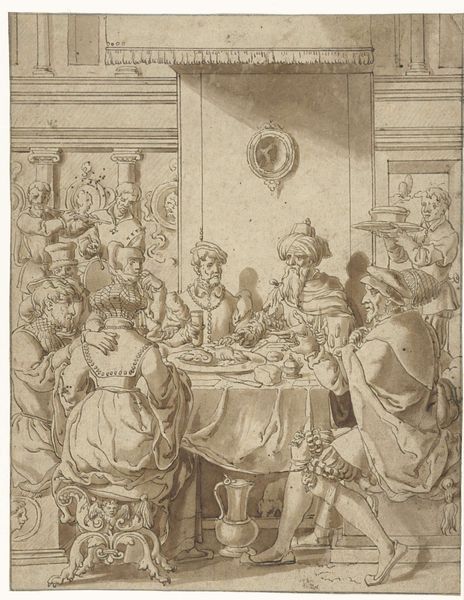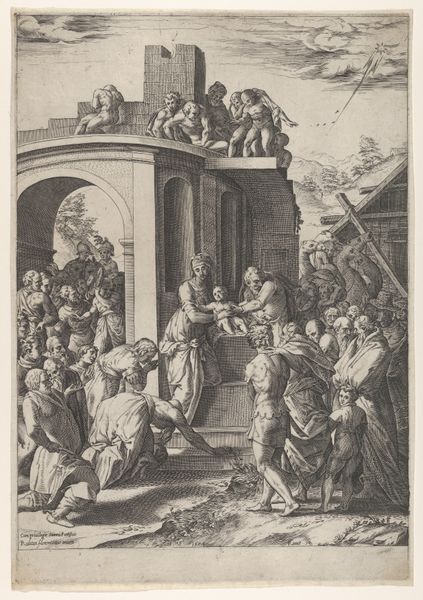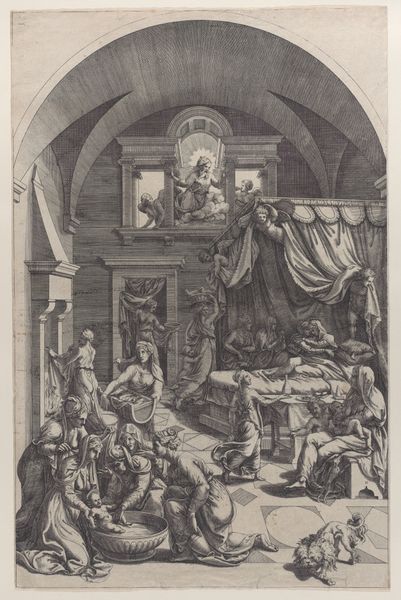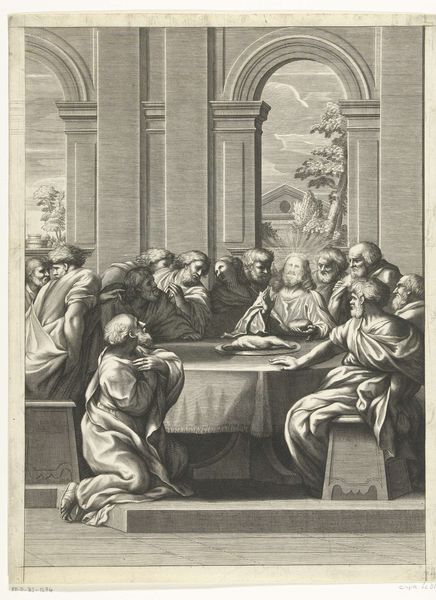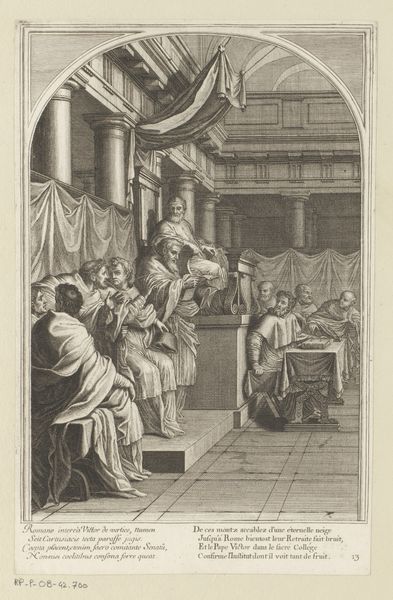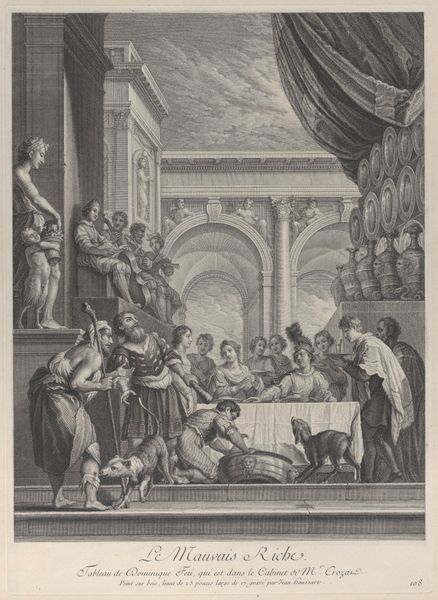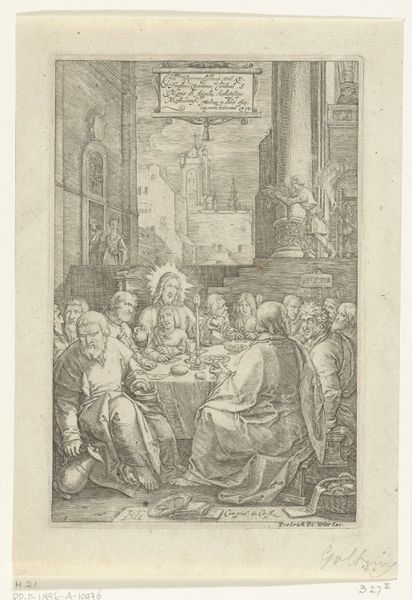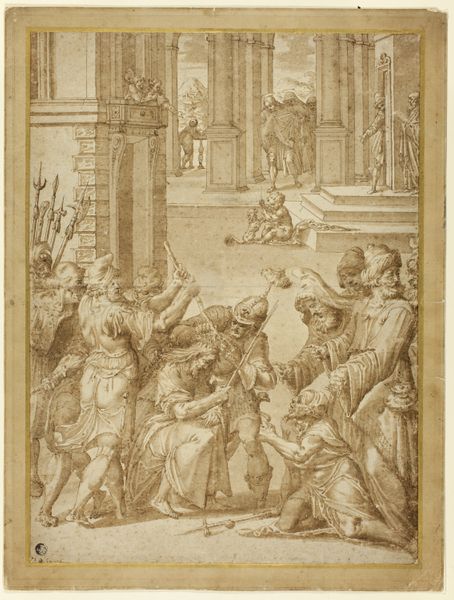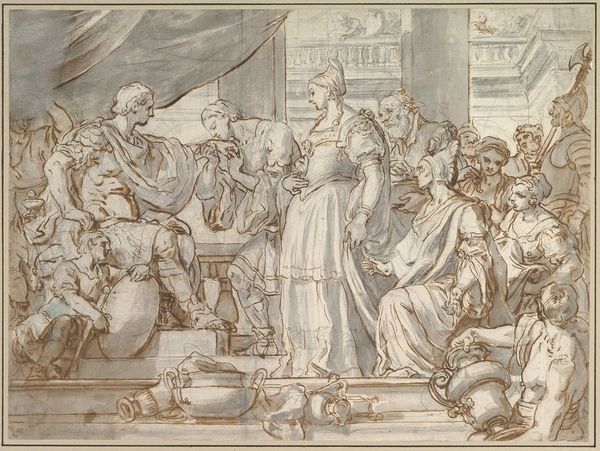
drawing, ink
#
drawing
#
venetian-painting
#
perspective
#
figuration
#
11_renaissance
#
ink
#
history-painting
Dimensions: 447 mm (height) x 362 mm (width) (bladmaal)
Editor: Here we have Domenico Campagnola's "Herod's Banquet," a drawing from sometime between 1500 and 1564. The figures, rendered in ink, feel very theatrical, almost staged. What can you tell us about it? Curator: Well, consider the architectural setting. Note the use of columns, reminiscent of Roman triumphal arches. It suggests not just a feast, but the proclamation of power, doesn’t it? The visual language merges earthly authority with a sense of timeless, even divine, right. The plate carried forward… what do you think is on it? Editor: Hmm... It's hard to make out for sure, but I think I see hair... Is that John the Baptist's head? Curator: Exactly. The symbol of John’s head becomes central. Think about what the head represents in art history - the seat of intellect, identity, and in this case, martyrdom. How does the artist juxtapose the horror of that symbol with the festivity of the banquet? Editor: It's like he’s showing the banality of evil, where something so gruesome is just part of the spectacle for these people. I see that a few guests averting their eyes, so some of them recognize the gravity of what has happened? Curator: Perhaps, or it might be to point toward their collusion to Herod's deeds and their passive agreement. That avoidance reinforces how cultural memory functions – what is seen, what is actively ignored, and how symbols evolve to carry meaning across generations. Notice the figure lower left who’s averted his gaze downward away from John. Editor: I do now. That is pretty chilling when put into perspective! I guess these images continue to hold power because of these layers of meaning that reflect persistent aspects of human nature. Curator: Indeed. Visuals crystallize cultural narratives, provoking continuous examination, debate, and personal awareness through changing contexts.
Comments
No comments
Be the first to comment and join the conversation on the ultimate creative platform.

